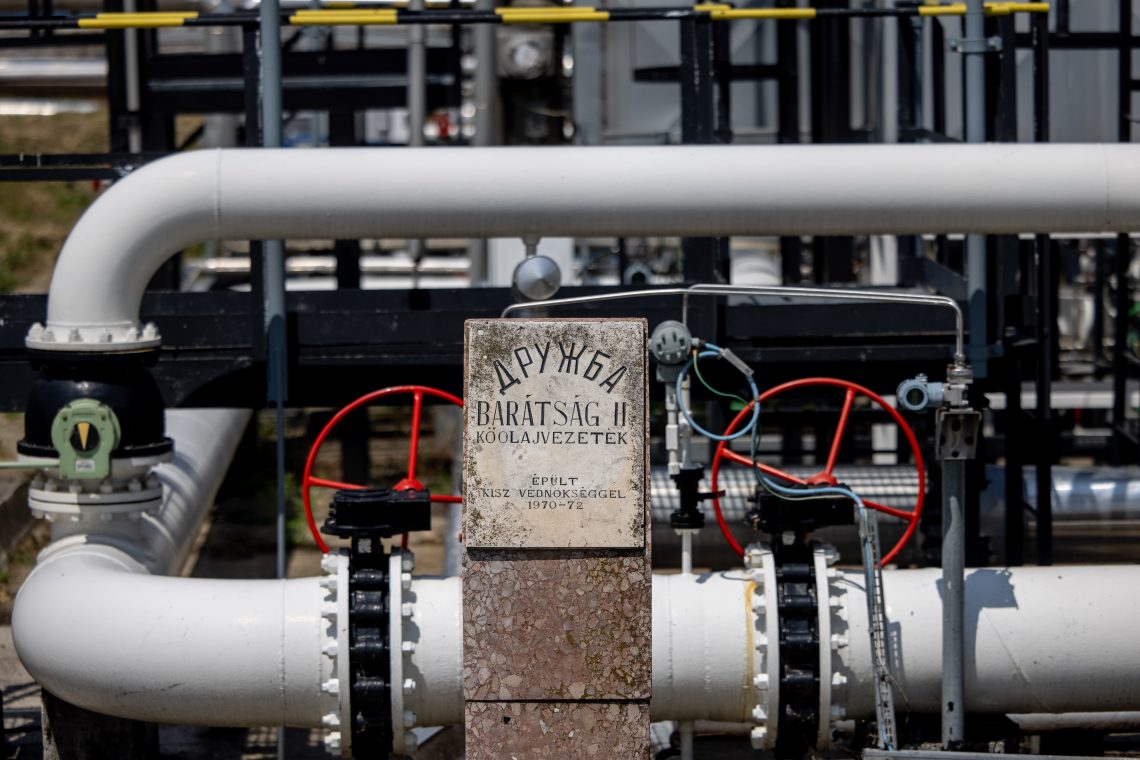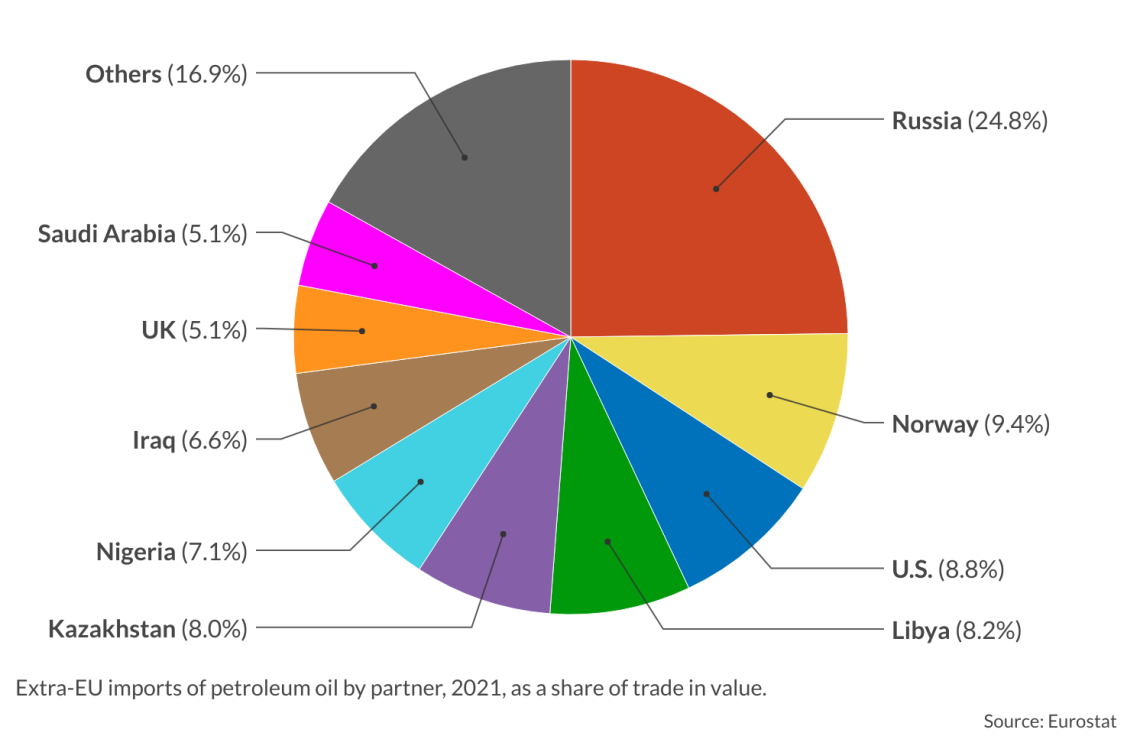‘Repowering’ the European Union
The EU has set out on an ambitious path to cut energy dependence on Russia, but the plan has its own worrying pitfalls.

In a nutshell
- The new EU energy plan may divide member states
- Consumer demand will be difficult to reduce
- A need for raw materials will increase dependence on China
Over two years into the pandemic, citizens of Europe face an uncertain future. A new recession looms, now alongside the threat of stagflation. Spiraling energy prices have turned into a dire cost-of-living crisis for many households. They are told that next winter, there might not be enough gas to go around, and that electricity could be rationed. Meanwhile, the climate crisis is coming to a head, and a global food security crisis has already been declared. In the background, Ukraine’s terrible agony drags on.
Against this backdrop, Europeans have been dismayed to realize that the European Union not only imported over 90 percent of its gas, but that Vladimir Putin’s Russia provided more than two-fifths of it. In March, the European Commission further disclosed that Russia accounted for 27 percent of the EU’s oil imports and 46 percent of its coal imports.
At a March 10-11 meeting of European heads of government, the Commission was invited to elaborate on an action plan to ensure affordable energy prices during the next winter season. Shortly after, Russia began cutting off gas to European countries that failed to comply with President Putin’s demand to pay for them in rubles. Preventing the Kremlin from using energy supplies as an instrument of blackmail became the EU’s priority.
Budget burdens
After a draft of the Commission’s blueprint was leaked on May 13, an official document was published five days later, and dubbed REPowerEU.
Laid out in 47 pages and a panoply of accompanying documents, the plan has a double ambition: make Europe independent from Russian fossil fuels as quickly as possible, preferably by 2027, and simultaneously accelerate its green transition.
REPowerEU is in line with other major EU climate plans approved in 2020 and 2021. In their own way, each is meant to fundamentally transform Europe’s energy system. The Fit-for-55 package proposes drastic climate, energy, transport and taxation policies to reduce net greenhouse emissions by at least 55 percent by 2030, compared to 1990 levels. The European Green Deal aims at making the EU completely climate-neutral by 2050.
REPowerEU wants to go even further and faster – demanding a “war-economy level of mobilization,” as described by researchers from the Florence School of Regulation. Substantial additional investments of 210 billion euros between now and 2027 will be needed to make the plan work.
Debt-stricken governments will struggle with new expenditures on top of those imposed by other climate packages.
The challenge with such ambitious plans is that they must be agreed upon by 27 member states, which takes time and can lead to watered-down compromises. This could become the fate of REPowerEU, all the more so because individual EU members will have to shoulder a large share of the cost.
Indeed, most of the boldest measures proposed by REPowerEU require national implementation, and at the significant expense of domestic taxpayers. Without fresh EU funds, debt-stricken governments will struggle to cope with massive new expenditures coming on top of those already imposed by the other climate packages. The situation could become more challenging when the EU’s common borrowing rules calling for fiscal consolidation will be reinstated, as planned, in 2023.
In the end, it will be up to each member state to decide whether and to what extent they will play REPowerEU’s game. This alone might compromise the plan’s effectiveness.
Green betrayal
The most urgent question is whether the plan, in its current form, is really able to bring about the supposed energy revolution, or whether it could become a smokescreen for covering up (and eventually repeating) the political mistakes of the past that have left Europe so dangerously dependent on dirty fuels and autocratic nations.
After all, REPowerEU will continue to rely heavily on fossil fuel imports from third countries, many of which are no less authoritarian than Russia. The European Commission has made it perfectly clear that nonrenewable energy sources such as natural gas will be part of the EU’s policy mix “until 2030 at least.” To get hold of these fuels, either through pipelines or through liquefied natural gas (LNG), the EU is actively looking for new suppliers. Engagements have already been initiated with “relevant” partners, most recently Azerbaijan. Other potential third parties are Qatar, Algeria, Egypt, Korea, Japan, Nigeria, Israel, Turkey, Norway and the United States – not all of these are reliable, democratic nations.
Unsurprisingly, the first of REPowerEU’s four pillars – “Diversify Energy Sources” – did not find much approval from international NGOs, who argue that the new energy plan underestimates the risks of being locked into several more decades of fossil fuel burning.
Greenpeace warned that REPowerEU will neither stop funding going to “dodgy suppliers of dirty fuels” (and through them, repressive governments), nor contribute to making the EU energy independent. “You don’t fix an addiction by switching dealers,” wrote the European Federation of Renewable Energy Cooperatives.
Climate Action Network Europe (CAN) sees in the EU’s new plan a concealed strategy for “outsourcing” Europe’s energy transition to vulnerable nations. The EU should not achieve its emission targets and energy security “at the expense” of countries “that face the biggest impact of climate change,” CAN has argued.
Facts & figures
REPowerEU urges member states to work together to ensure an adequate degree of solidarity – especially if Russia were to make good on its threat to turn off all gas exports to Europe this winter. Governments are asked to buy gas jointly on international markets, akin to their approach last year for coronavirus vaccines. For that purpose, an EU Energy Platform for the pooled purchase of gas, LNG and hydrogen has recently been established.
But for the moment, not all member states seem to be aligned with the idea. As they boycott Russian imports, some seek to establish strategic alliances of their own, notably with fossil fuel suppliers from Africa (even if such partnerships may cause new problems of pollution, exploitation and political instability in the partner countries). In one example, Italy recently signed gas deals with Angola, Congo and Mozambique, after securing agreements with Algeria, Libya and Egypt.
Playing your part
The second pillar of REPowerEU, demand reduction, directly concerns citizens and companies. The underlying idea is that by consuming less, considerable amounts of energy can be saved.
The Commission presents this approach as the “cheapest, safest and cleanest” way to wean the EU off Russian fossil fuels. To get Europeans on board, a massive awareness campaign will soon be launched, under the motto “playing my part,” with the aim of inducing lasting lifestyle changes.
The Commission refers to “personal choices” that will “mainly be voluntary and rely on goodwill,” such as driving less, using public transport, traveling by night trains instead of planes, working as much as possible from home, switching off unused lights, and reducing home heating in the winter and air conditioning in summer. Ready to implement almost from one day to the next, it is argued that such “behavioral measures” could create long-term trends that will help drive the green transition.
Facts & figures
According to the EU’s “Save Energy” plan, it is the task of policymakers to deliver the “right messages at the right time.” One such example is the International Energy Agency’s assertion that the reduction of thermostats by 1 degree Celsius could save around 10 billion cubic meters of natural gas.
But when it comes to monitoring or even sanctioning ecological misconduct, Brussels technocrats are largely quiet, and for good reason. How can officials verify that consumers moderate the temperature of their homes without employing a degree of government intrusion into private life that would be totally unacceptable in rule-of-law-based nations?
The key question remains: will people really play their part? If they do not, REPowerEU’s success might also be jeopardized on the aspect of demand reduction.
Bad good ideas
What about the plan’s third pillar – indeed, the only one that promises to accelerate the “Clean Energy Transition” through innovative renewables such as solar, wind, geothermal, hydropower and biomass?
The Commission recently announced a mandate for rooftop solar panels on commercial and public buildings by 2027 and for residential buildings by 2029. The EU Solar Energy Strategy and the European Solar Rooftops Initiative open up promising paths; unfortunately, unclear regulations and numerous administrative, economic and political barriers currently get in their way.
The REPowerEU drafters were aware that slow and burdensome permit-granting procedures pose a serious obstacle to the fast deployment of renewables. For companies building wind or solar power projects, it can take years to get the necessary authorizations. Under the new energy plan, member states will be prompted to identify so-called “go-to zones” where procedures should be significantly simplified. These may be sparsely populated regions, zones that are alleged to have “lower environmental advantages,” or areas at sea.
Speeding up permitting is clearly a step in the right direction. But doing it by sacrificing the environmental health of chosen regions – rather than by mitigating ineffective bureaucratic procedures – could nonetheless cause new conflicts and hence, new delays.
Hope or hype?
As for bioenergy, which already accounts for 60 percent of all renewable energy in the EU, environmental organizations expressed their disappointment with the new energy plan. RePowerEU may have a certain interest in biomethane (even proposing a specific Biomethane Action Plan), but this renewable natural gas represents only a small share of bioenergy, according to critics. The Swedish Bioenergy Association points out that bioenergy is mentioned only in one paragraph of the REPowerEU document, while hydrogen comes up 45 times– a clear sign that the EU is in fact opposed to bioenergy solutions.
It is true that REPowerEU’s preference for electrolytic hydrogen sticks out. The package sets a target of 10 million tons of hydrogen to be produced in the EU by 2030, and an equal quantity to be imported from abroad. The geopolitical implications of such a new dependency, unfortunately, are left unconsidered.
One problem with hydrogen is that colossal amounts of electricity are needed to produce it.
The electrolyzer capacity existing today remains blatantly insufficient for the task at hand. Global production of electrolyzers –machines that split water molecules into hydrogen and oxygen using an electric current – would have to grow exponentially over the next eight years, which is easier said than done.
Another problem with hydrogen is that colossal amounts of electricity are needed to produce it. Ideally, this should be green electricity, but that would imply that in the coming decades an increasing part of existing renewable electricity is used to produce hydrogen rather than for direct electrification.
Achieving REPowerEU’s green hydrogen targets thus poses a risk of “cannibalizing the Energiewende,” to quote a Bellona Europa report.
Scenarios
Aware of these dilemmas, the Commission acknowledged that to scale up the EU’s hydrogen production, fossil fuels must be part of the solution. In the current context of an energy shortage, switching from gas-based power generation to coal is even considered a short-term option. If the ultimate aim of the EU’s green agenda is to move away from fossil fuels, these steps appear to fall short.
In the near future, skills needed for the green transition is another issue to be addressed. REPowerEU relies heavily on the private sector to provide the knowledge, innovation and money needed to implement the ambitious goals set forth by the plan’s fourth pillar, “Smart Investment.” But again, one must ask whether the private sector is willing and able to play its part.
Time is running out, and the main problem remains unaddressed: to succeed in its energy transition, the EU needs critical raw materials (minerals and metals) and equipment (electrolyzers, batteries, solar panels, windmills) for which up to 90 percent of the supply comes from China.
REPowerEU thus risks replacing one dependence with another – that of Russia, for gas, could give way to a no less risky reliance on China. Such a scenario would certainly not help “repower” the EU, not least in the sense of restoring the EU’s status as a world power.





